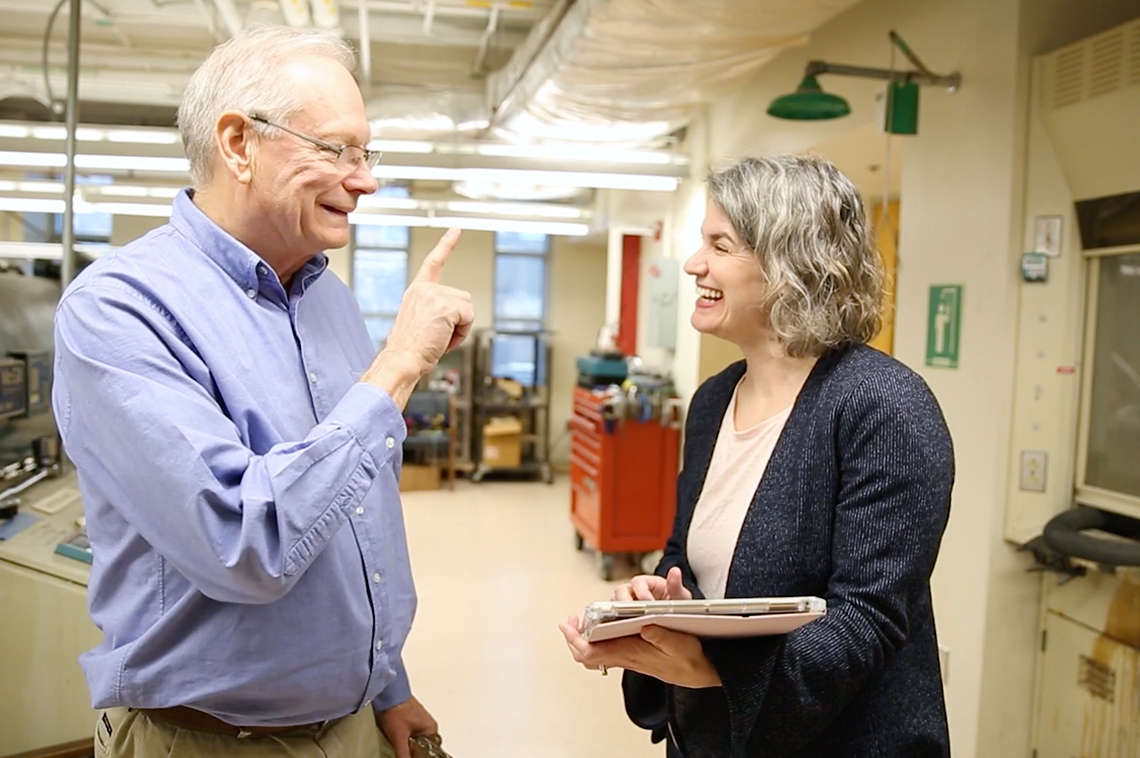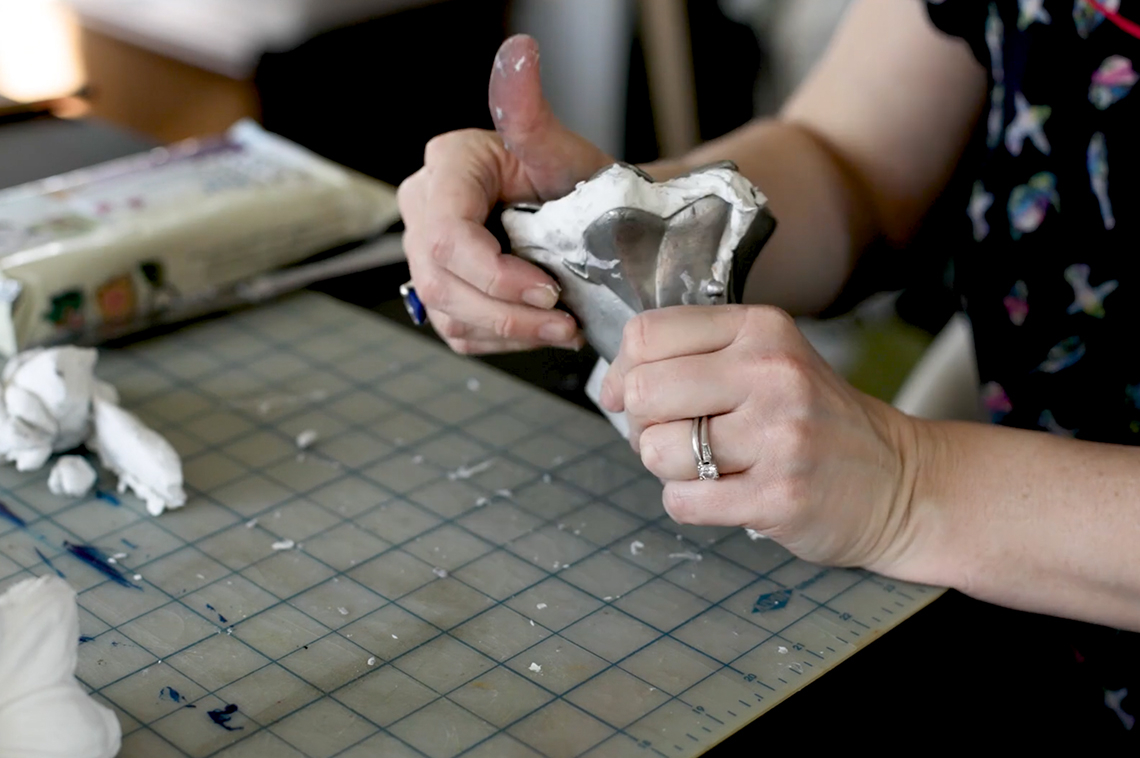

Caroline Rutledge Armijo is a mixed-media artist, environmental advocate and mother, who lives in Greensboro, North Carolina. Her work incorporates her concern for environmental issues threatening her home community – coal ash and fracking. She advocates for Residents for Coal Ash Cleanup based at Belews Creek, NC and Alliance of Carolinians Together (ACT) against Coal Ash. She is partnering with scientists from North Carolina Agricultural and Technical State University to create a series of sculptures that repurpose this hazardous waste material safely and that will become the centerpiece of a public park as the Lillies Project, funded by ArtPlace will also serve as a local pilot for environmental policy that will determine how coal ash is managed in the region.
"This past February, UNC School of Journalism students asked if I would be willing to be part of an Environmental Journalism class project. I said yes. In fact, I had just scheduled an interview with UNC's General Alumni Association Magazine and asked if they could work together. I love resulting film which you can see below. It really focuses on both the art and the science, over a lot of weighty information about coal ash.
Although I have been a coal ash advocate for a number of years, I am not scientific in the least. For years, I had nightmares of attending my first high school chemistry class on the day of the final exam. It didn't matter that I had already graduated from college and even earned my Masters. In my dreams, I could not drop the class. The nightmare reoccurred until recently when I began meeting with scientists at NC State A&T University.
I read a newspaper article that profiled their research into developing materials out of coal ash. I was thrilled. Progress to this monumental issue facing North Carolina is being made. But I never saw another article and the notion lingered with me. Eighteen months later, I reached out to Dr. Kunigal Shivakumar. We had a large problem in the community. I wanted to know if he could help us.
Upon meeting with Dr. Shivakumar and his research partner, Wade Brown, I learned they were unaware of the health impacts on the community. When I first saw the chair rail on the office desk, I said we would need billions of miles of this material to solve this problem. They were both were eager to learn how they could help. As part of a learning institution, benefiting the greater community is part of the university’s mission. Dr. Shivakumar stated, “Once you learn of the problem, you can begin to address it.”
After our meeting, several of the researchers attended a few public hearings around coal ash and heard testimony from people living in the community. With a better understanding of the full problem, they were able to expand their focus from small building materials to include a safer storage method. This wider thinking also led to ideas that use up the coal ash on a much larger scale, like applications that could prove useful to the Department of Transportation.
The opportunity to incorporate art into our conversations has been humorous. At times, I present my ideas with hesitation. But recently, Shivakumar's advice was encouraging and altered my creative process and thinking with what our final main piece will look like.
Art has also been an easy way to draw in more people to the advocacy conversation. We had reached a ceiling of who was attending our meetings and struggling to gain more traction in an ongoing marathon of advocacy. But through music, films, and art, we can share the heavy scientific realities of what it means to live in close proximity to coal ash without scaring anyone away. As an artist, I am the first to admit that art was the missing link from our last five years of advocacy.
In college, I took a studio art class focused on Art & The Body. Perhaps through these driven conversations and a dental school prerequisite for 3D Studio Art, I always understood the connections between art and science. Somehow seemingly on opposite ends of one spectrum, they were intertwined from another vantage points. Both start with trying to answer a question. What's your question?
A special thanks to Alex Kormann for coordinating the development of this video and coming out to interview us.
Video by Hanna Davison and Alex Kormann, timelapse footage by Alexis Fairbanks.





